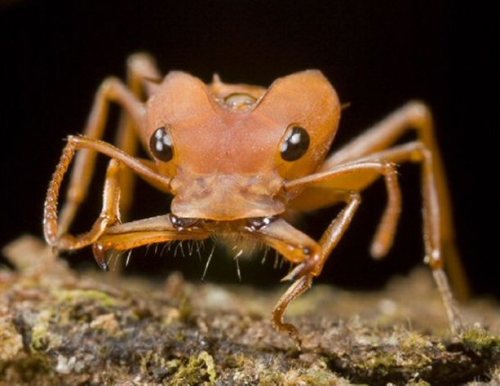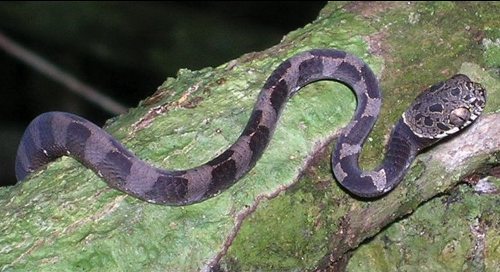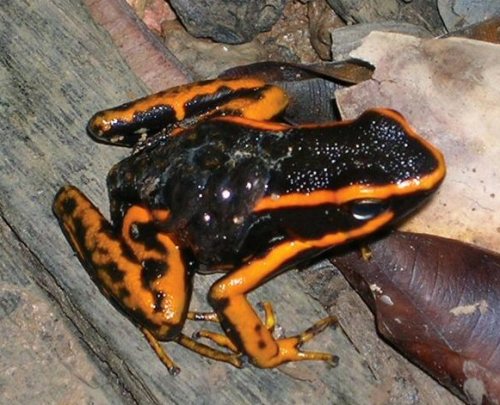New Suriname Species
Posted by: Loren Coleman on August 8th, 2007
Conservation International led expeditions to the South American country of Suriname in 2005 and 2006, finding two dozen potential new species in the process. Among the biological curiosities documented during the expeditions was this ant species, Daceton armigerum, which is a highly visual predator of the rainforest canopy.
Piotr Naskrecki / Conservation International

The Amazonian snail-eater snake, Dipsas indica, was documented by researchers on the Lely Plateau in Suriname. This snake feeds on snails, which extracts from the shell. After the snake seizes the exposed body of a snail, the slender lower jaws of the snake are drawn into the shell as the snail retracts. The snake then slowly pulls on the soft body of the snail with its lower jaws, eventually tearing the body away from the shell, which is discarded.
James I. Watling / Conservation International

This frog, Epipedobates trivittatus, differs from those found in other areas of Suriname in its coloration – with orange stripes instead of the usual greenish-yellow shades. This frog was recorded during surveys in 2005 and 2006. One of the most interesting things about this species is the fact that the male frogs will transport the tadpoles on their back.
James I. Watling / Conservation International

About Loren Coleman
Loren Coleman is one of the world’s leading cryptozoologists, some say “the” leading living cryptozoologist. Certainly, he is acknowledged as the current living American researcher and writer who has most popularized cryptozoology in the late 20th and early 21st centuries.
Starting his fieldwork and investigations in 1960, after traveling and trekking extensively in pursuit of cryptozoological mysteries, Coleman began writing to share his experiences in 1969. An honorary member of Ivan T. Sanderson’s Society for the Investigation of the Unexplained in the 1970s, Coleman has been bestowed with similar honorary memberships of the North Idaho College Cryptozoology Club in 1983, and in subsequent years, that of the British Columbia Scientific Cryptozoology Club, CryptoSafari International, and other international organizations. He was also a Life Member and Benefactor of the International Society of Cryptozoology (now-defunct).
Loren Coleman’s daily blog, as a member of the Cryptomundo Team, served as an ongoing avenue of communication for the ever-growing body of cryptozoo news from 2005 through 2013. He returned as an infrequent contributor beginning Halloween week of 2015.
Coleman is the founder in 2003, and current director of the International Cryptozoology Museum in Portland, Maine.










This is so cool! I love reading about new species being found all over the place. Maybe this year someone in the scientific community will catch a living bipedal hairy apelike creature?
Very Kool. And I hope shimmeringsoul is right.
That snake’s head looks very strange.
The snail eating snake is fascinating. It is truly amazing the way in which the myriad creatures of this earth have found ways to adapt to survive in their habitat. This snake I assume is highly specialized for eating snails and it is interesting to contemplate the circumstances that were involved in taking this evolutionary path to fill this niche. The article does not mention it, but I wonder if this snake is particularly adapted to eating a certain species of snail, or if it feeds on whatever kind of snail it comes across? It may seem like an odd question to some, but there are animals that are incredibly specialized to this degree.